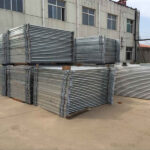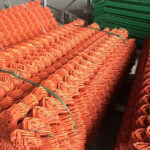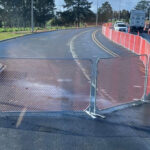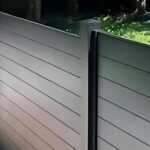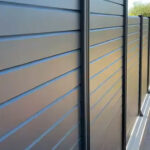Mastering the Art of Bending Cattle Panels: A Comprehensive Guide for DIY Enthusiasts
Are you looking to transform your garden or create a unique livestock enclosure? Bending cattle panels might be the solution you’ve been searching for! This comprehensive guide will walk you through everything you need to know about bending cattle panels, from the basics to advanced techniques. Whether you’re a seasoned DIY enthusiast or a curious beginner, this article will equip you with the knowledge and skills to tackle your next project with confidence.
Why Should You Read This Article?
Bending cattle panels opens up a world of possibilities for creative and functional structures. From garden trellises to livestock pens, the versatility of bent cattle panels is unmatched. This guide will not only teach you the techniques but also inspire you with innovative ideas and practical applications. By the end, you’ll be ready to bend cattle panels like a pro!
1. What Are Cattle Panels and Why Are They Useful?
Cattle panels, also known as livestock panels or hog panels, are versatile metal fencing components widely used in agriculture and DIY projects. These paneles galvanizados para ganado are typically made of heavy-gauge wire welded into a grid pattern. Their sturdy construction and flexibility make them ideal for various applications beyond their original purpose.
Key Features of Cattle Panels:
- Durable galvanized steel construction
- Available in various sizes (commonly 16′ long)
- Versatile for both agricultural and DIY uses
- Can be easily bent and shaped for custom projects
2. What Tools Do You Need to Bend Cattle Panels?
Before you start bending cattle panels, it’s essential to gather the right tools. Here’s a list of items you’ll need:
- Heavy-duty gloves
- Safety glasses
- Cinta métrica
- Marker or chalk
- Pipe or sturdy round object (for creating curves)
- Hammer (for minor adjustments)
- Bolt cutters (if you need to resize panels)
- Clamps (for securing panels during bending)
- Helper (for larger projects)
Pro Tip: Invest in quality tools to make the bending process easier and safer. Abrazaderas temporales para cercas can be particularly useful for holding panels in place while you work.
3. How Do You Prepare for Bending Cattle Panels?
Proper preparation is key to successful panel bending. Follow these steps:
- Measure and mark your desired bend points on the panel
- Clear a large, flat working area
- Gather all necessary tools and safety equipment
- Recruit a helper for larger projects
- Plan your bending strategy based on the final shape you want to achieve
4. What Are the Basic Techniques for Bending Cattle Panels?
There are several methods for bending cattle panels, depending on the desired shape and angle:
Manual Bending:
- Best for gentle curves and small projects
- Use your body weight and strength to gradually bend the panel
- Work in small increments to avoid overstressing the wire
Pipe Bending:
- Ideal for creating uniform curves
- Place the panel over a large pipe or round object
- Apply pressure to form the curve around the pipe
Corner Bending:
- Used for creating sharp angles or 90-degree bends
- Secure one end of the panel and apply pressure to the other end
- Use clamps to hold the bent shape in place
5. How Can You Create a Cattle Panel Trellis for Your Garden?
A cattle panel trellis is a popular and practical garden project. Here’s how to make one:
- Choose a suitable location in your garden
- Decide on the desired height and width of your trellis
- Bend the cattle panel into an arch shape using the pipe bending method
- Secure the ends of the panel into the ground using stakes or by burying them
- Plant climbing vines or vegetables at the base of the trellis
Pro Tip: Consider using garden edging fence to create a clean border around your trellis area.
6. What Are Some Creative Uses for Bent Cattle Panels?
The possibilities are endless when it comes to using bent cattle panels. Here are some inspiring ideas:
- Greenhouse or hoop house frames
- Decorative garden arches
- Livestock shelters
- Compost bin enclosures
- Vertical gardening structures
- Temporary fencing for events
7. How Do You Secure Bent Cattle Panels?
Properly securing your bent panels is crucial for stability and safety. Consider these methods:
- Use T-posts or metal stakes to anchor panels into the ground
- Attach panels to existing structures using bolts or heavy-duty wire
- Connect multiple panels using zip ties or wire for larger structures
- For permanent installations, consider concrete footings
8. What Safety Precautions Should You Take When Bending Cattle Panels?
Safety should always be your top priority. Follow these guidelines:
- Wear protective gear (gloves, safety glasses)
- Work with a partner for large or heavy panels
- Be aware of the panel’s spring-back potential
- Avoid over-bending, which can weaken the wire
- Use proper lifting techniques to prevent back injuries
9. How Can You Maintain and Care for Bent Cattle Panels?
To ensure the longevity of your bent cattle panel projects:
- Regularly inspect for signs of rust or damage
- Apply a rust-resistant paint or coating if needed
- Tighten any loose connections or fastenings
- Keep panels clean and free of debris
- Store unused panels in a dry area to prevent corrosion
10. Where Can You Purchase Quality Cattle Panels for Your Projects?
When sourcing cattle panels for your DIY adventures, consider the following:
- Local farm supply stores
- Online retailers specializing in agricultural supplies
- Metal fence manufacturers offering custom panel options
- Reclaimed or secondhand panels for budget-friendly projects
Pro Tip: Always check the panel specifications, including wire gauge and spacing, to ensure they meet your project requirements.
Key Takeaways: Mastering the Art of Bending Cattle Panels
- Cattle panels are versatile and durable materials for various DIY projects
- Proper tools and safety precautions are essential for successful panel bending
- Multiple bending techniques can be used depending on your desired shape
- Bent cattle panels have numerous creative applications in gardening and agriculture
- Regular maintenance will extend the life of your bent panel projects
By mastering the art of bending cattle panels, you’ve unlocked a world of creative possibilities for your home, garden, and farm. Remember to always prioritize safety, plan your projects carefully, and don’t be afraid to experiment with new ideas. Happy bending![Image: A beautifully curved cattle panel trellis in a lush garden, showcasing the versatility and aesthetic appeal of bent panels.]



